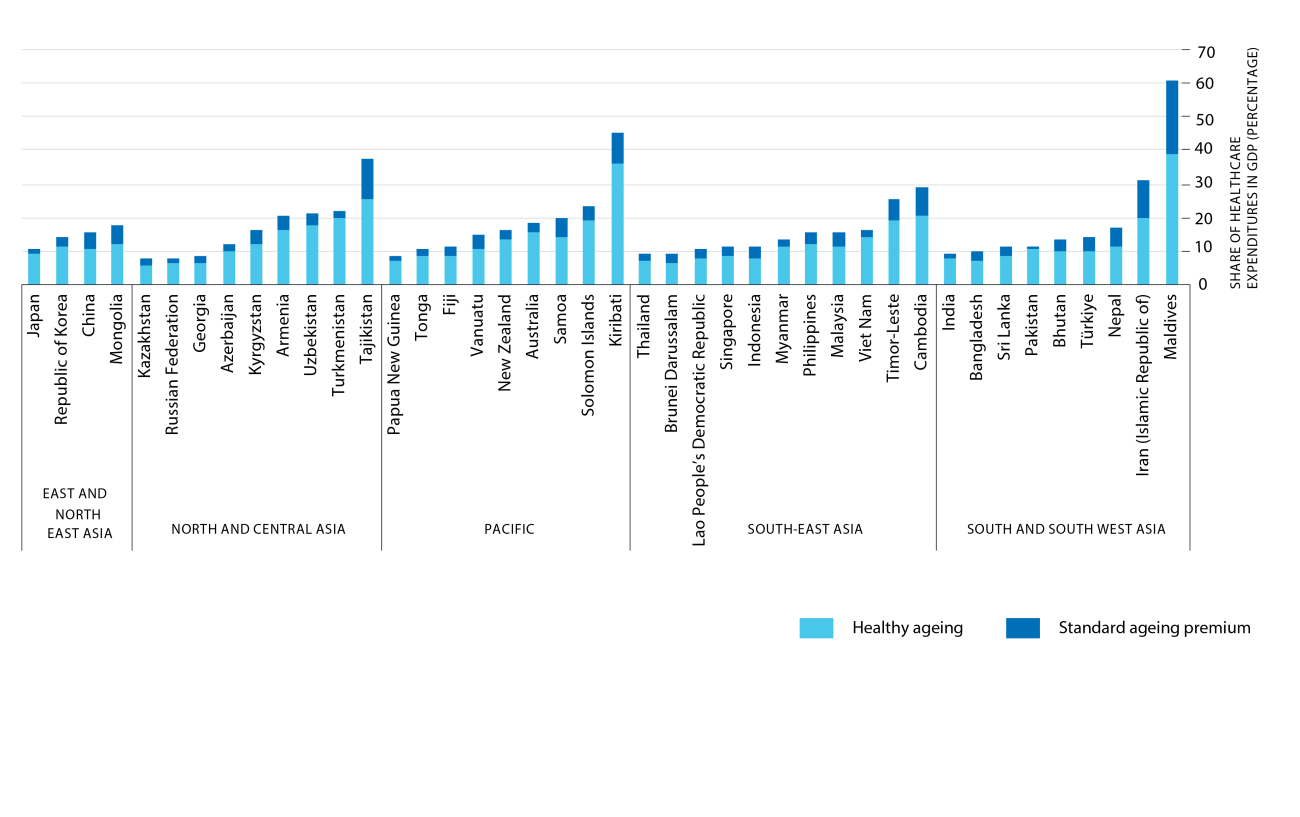
More than one third of the population in Asia and the Pacific is not effectively protected by a healthcare scheme, rendering 1.6 billion people in the region into health-related vulnerabilities. Globally, 243 million people were pushed back into poverty due to the COVID-19 pandemic, whilst preventable accidents and diseases are still claiming the life of 2.9 million workers every year.
At the macro level, the ineptitude of an ailing workforce to access healthcare – owing to geographical barriers, complications in practical access or lack of awareness– will negatively impact productivity and economic growth. At the household level, families will struggle to smooth consumption and refrain from investing in productive assets. This will have profound implications for tax revenues, poverty alleviation and our common agenda to achieve the 2030 Agenda for Sustainable Development.
Only a handful of countries in the region provides access to affordable healthcare for most of their citizens. The region scores 64 out of 100 in the Universal Health Coverage service coverage index (SDG 3.8.1), however significant differences are found between countries, from a national score of 33 in Afghanistan to 86 in Australia. Without an acceleration in the growth rate of the index, ESCAP estimates that only seven countries in the region will achieve Universal Health Coverage in 2030. As a result, a significant portion of the region’s population are faced by so-called catastrophic health expenditure, defined as when a household spends more than 10 per cent of total household expenditures on healthcare. This is the situation for two thirds of the region’s workforce and their dependent family members. When their basic wellbeing is not upheld, workforce in Asia and the Pacific are not arising to the upskilling required by existing global megatrends.
Healthcare coverage is too often reserved for those with formal employment who can afford stable contributions to health insurance plans, leaving one out of five people uncovered in the region. Across Asia and the Pacific, poor health has been disproportionately reported by people with more precarious contracts and lower income (figure 1). Ultimately, a significant portion of the region is behind left behind in SDG 3 (Good Health and Wellbeing) which will put immense pressure on the attainment of other Sustainable Development Goals in the near future.
Figure 1: Share of population in the Asia-Pacific region with poor health by employment status and level of income (%)

Source: WVSA (2022). World Values Survey, Wave 7. Available at https://www.worldvaluessurvey.org/" (accessed in January 2022).
At the same time, Asia and the Pacific is aging at an unprecedented speed, with many people getting older without getting richer thereby putting further strains on the accessibility, availability and affordability of healthcare. According to ESCAP, the population of older persons 65+ in the region increased from 171 million in 1990 to 445 million in 2021 and is expected to more than double by 2050 to over 950 million. The region’s aging workforce further highlights the importance of Universal Health Coverage to safeguard the welfare and productiveness of workers.
Population aging can exacerbate fiscal pressure on public healthcare services and intensify catastrophic healthcare expenditures particularly when people are not aging in a healthy manner. Many middle-income countries in the region will witness brisk surge in healthcare expenditures by 2050 (figure 2). The standard aging premium (in orange) illustrates that in the absence of healthy aging, health expenditures could more than double the healthcare expenditure in some countries. Without Universal Health Coverage, the aging workforce in Asia and the Pacific will be fighting an uphill battle against global megatrends such as digitalization and climate change.
Figure 2: Projected Health Expenditures (as a share of GDP) in 2060 by country (% of GDP)

Source: Howdon and Pasali (2022).
When considering Universal Health Coverage in Asia and the Pacific, it is important to address two pronounced caveats: (i) legal health coverage does not equate to actual service coverage; (ii) health protection should not only reimburse the cost arising from healthcare services, but also the income loss due to sickness. Therefore, it is important to accelerate the progress towards Universal Health Coverage using the Social Health Protection principles, which serves as a rights-based approach to reaching the objective of universal health coverage that ensures both financial protection and effective access to health care services.
The COVID-19 pandemic has further highlighted the social determinants of healthcare in the region, and we must arise to the challenge by accelerating Universal Health Coverage in the region, so workers’ wellbeing and productivity could be ensured to shape a workforce we need for Asia and the Pacific.